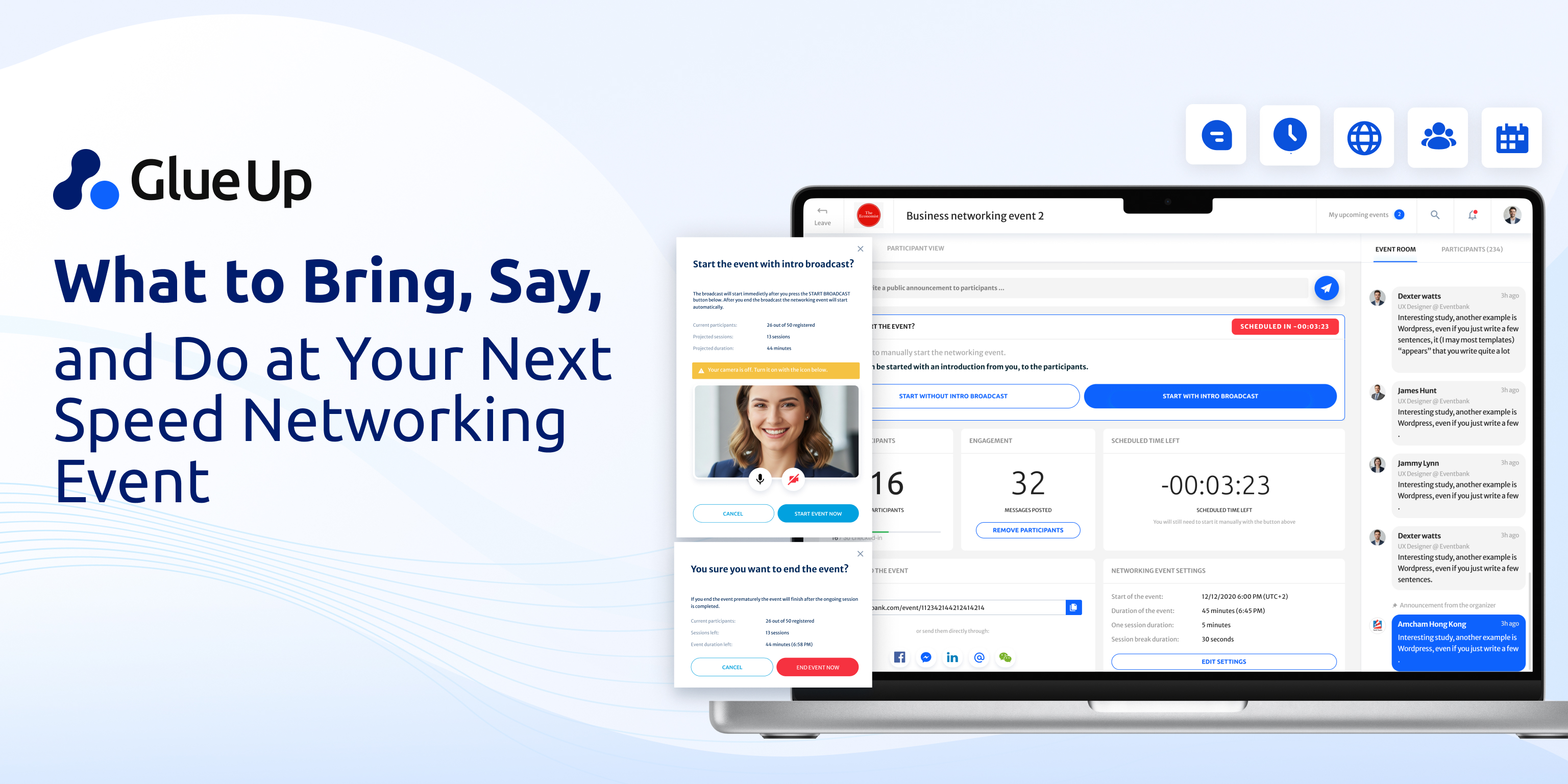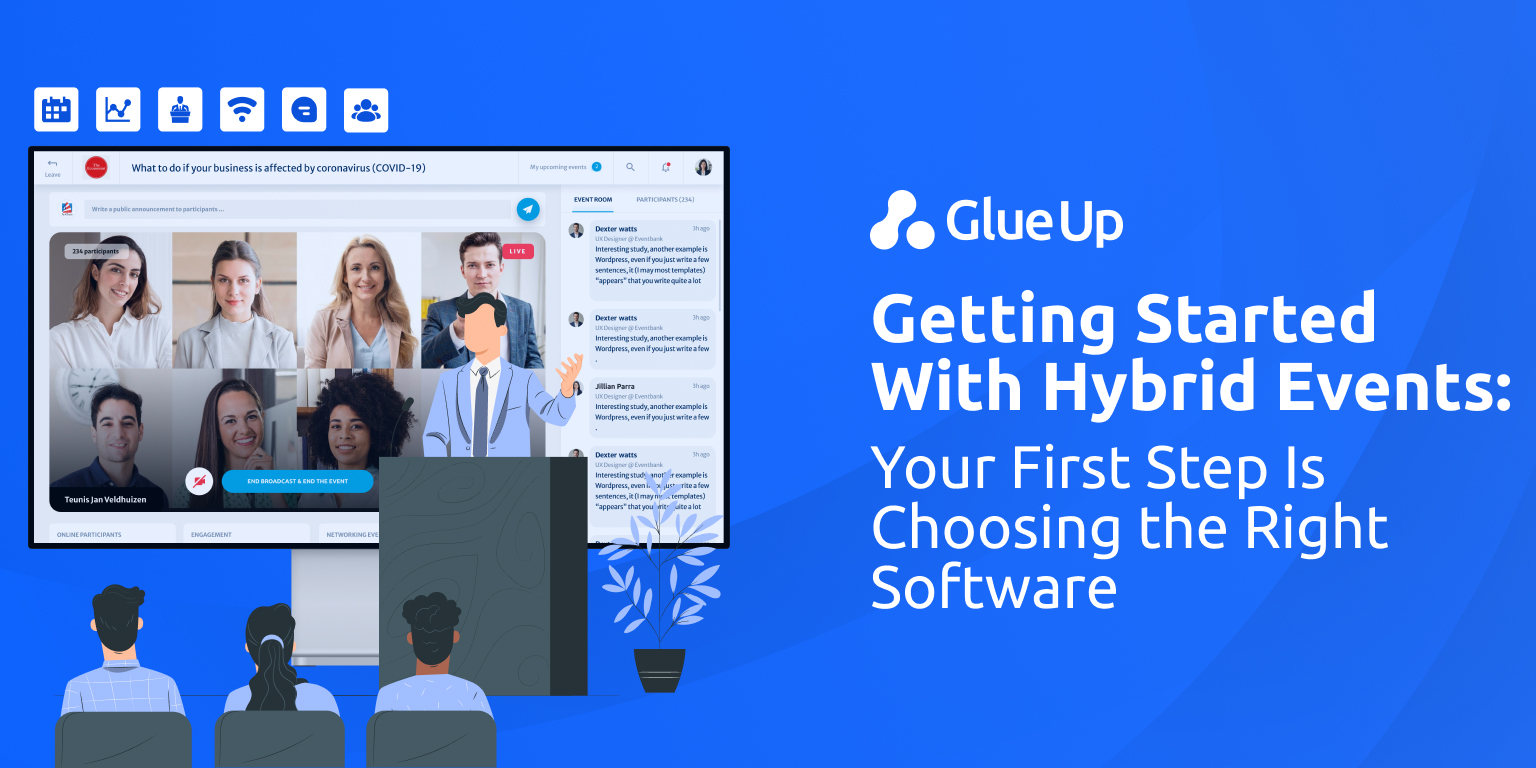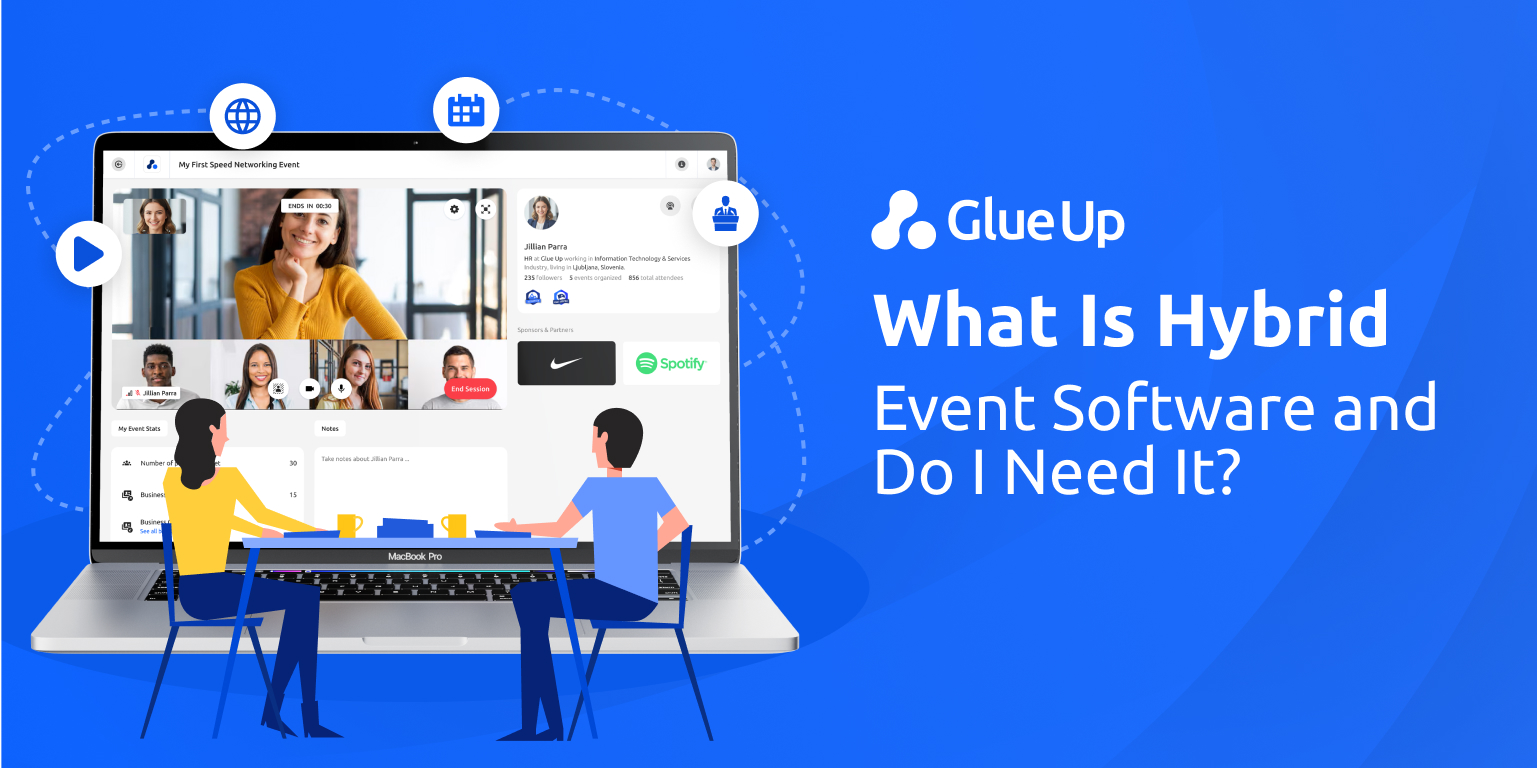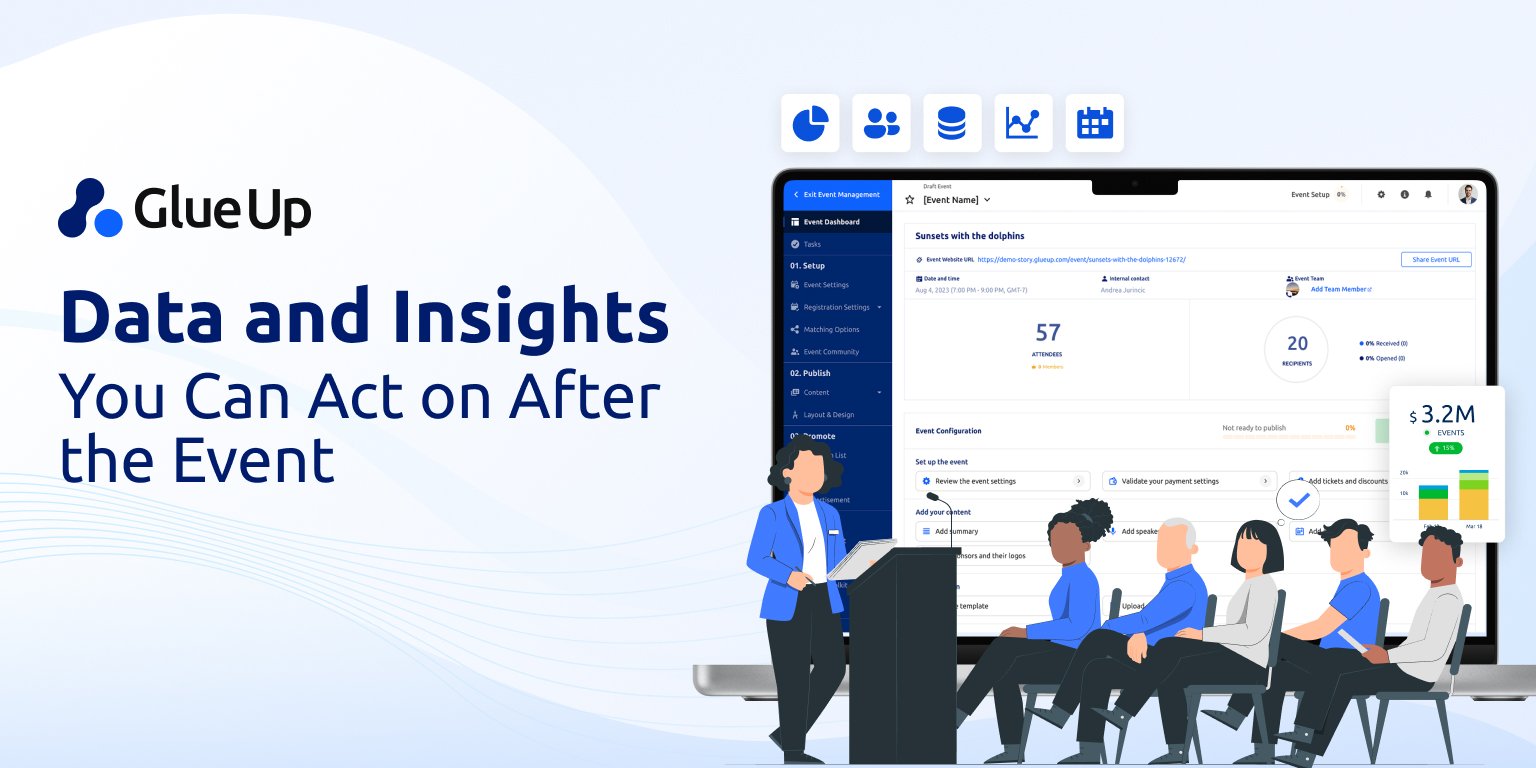
Networking has always been the lifeblood of associations, chambers of commerce, and member-based organizations. People join because they want connections that matter. Yet for every story of a great introduction at an event, there are dozens of stories of awkward silences, missed opportunities, and stacks of forgotten business cards. That’s why speed networking tips have become a rising topic in the member engagement world: how do you help people connect quickly, memorably, and in ways that last beyond the event itself?
The answer is not about gimmicks. It’s about structure. The most effective speed networking events today borrow from behavioral science, operational discipline, and smart event technology. They feel less like a forced “dating game” and more like a professional accelerator, three minutes of focused attention that might change a career, secure a sponsor, or unlock a new collaboration. And for organizers, the playbook is clear: what you bring, what you say, and what you do before, during, and after determines whether speed networking is remembered as a highlight or dismissed as another checkbox activity.
Key Takeaways
Preparation matters more than charm. Bringing the right tools: cards, QR codes, notebook, badge placement; sets the stage for quick, effective conversations.
Short, clear openers win. A 30-second intro and a 10-second backup line, paired with smart questions, make you memorable and likable in just a few minutes.
Timing is the engine of speed networking. Three to five minutes per round, 60–90 minutes total, with clear flow and prompts, keeps energy high and outcomes strong.
Follow-up is the real ROI. The event is only half the work; delivering value in follow-ups within 24–48 hours (while staying compliant with CAN-SPAM, CASL, and GDPR) is what turns chats into lasting connections.
Associations need structure plus technology. Speed networking thrives when supported by event platforms like Glue Up that handle registration, prompts, timing, mobile apps, and automated follow-ups, all making engagement measurable.
Speed Networking Tips: What to Bring
Let’s start with the obvious, then go deeper. Most people know to bring a business card to a networking event. Yet in 2025, the details matter more than ever. A flimsy card is a signal. A smudged badge is a barrier. A dead phone battery is a disaster. In short rounds of three to five minutes, the smallest friction point is the difference between a productive conversation and a wasted one.
For attendees
Business cards or a LinkedIn QR code. Many chambers now encourage digital exchanges to reduce waste. LinkedIn’s QR code is an instant connector: open your app, scan, done. For those who still love the tangible, carry a slim cardholder to keep cards crisp.
A fully charged phone (and backup power). You’ll be scanning codes, writing quick notes, or setting reminders in real time. Nothing kills the rhythm faster than fumbling for a charger.
A small notebook and pen. In an age of constant screens, analog notes still stand out. A single line: “wants sponsor leads in healthcare”; can make your follow-up sharper.
Water and mints. Call it basic, but these are the human details that keep you at your best across 20 back-to-back introductions.
Name badge on the right side. When you shake hands, the eye naturally follows that line of sight. Right-side placement means fewer awkward tilts to squint at your name.
For organizers
The stakes are higher. Associations are judged by how smoothly these events run. Members pay dues expecting clarity. Organizers should bring:
Timing tools. A bell, chime, or countdown clock. Three minutes is the sweet spot, five at the maximum. Ninety minutes total is where energy peaks before fatigue sets in.
Signage and flow markers. Arrows, table numbers, printed instructions. Don’t assume everyone knows how speed networking works.
Prompt cards. Place a short list of conversation starters on each table. They rescue first-timers and level the playing field for introverts.
Accessibility and inclusion basics. Large-font badges, dual-clip lanyards that don’t flip, clear aisles for wheelchairs, and a code of conduct. In 2025, this is best practice.
Glue Up users often go further, equipping attendees with mobile apps that act as digital cardholders, note-takers, and post-event schedulers all at once. It’s what the platform provides to make every introduction easy and trackable.
Speed Networking Tips: What to Say
Here’s where most people stumble. They either ramble for two minutes straight or freeze into a generic script that no one remembers. The best way to master the “say” part is to prepare two versions: a 30-second opener and a 10-second backup.
The 30-second opener
A template that works across industries:
“Hi, I’m [Name], [Role] at [Organization]. We help [who] with [problem] so they can [outcome]. A recent example is [proof]. If it’s useful, I’d love to [micro-next step: swap cards, connect on LinkedIn, schedule a short call].”
This balances clarity, credibility, and a clear ask, all in less time than an elevator ride.
The 10-second backup
Sometimes the bell rings fast, or the vibe calls for brevity:
“[Name], [Role] at [Org]. I focus on [one problem you solve]; happy to trade a tip or two.”
Think of it as the tweet version of your opener.
Ask more, tell less
Here’s the science: people like you more when you ask questions. In experiments from Harvard Business School and Journal of Personality and Social Psychology, people underestimated how much others enjoyed answering questions. Asking “What would make this event a win for you today?” or “Who’s the best connection for you in this room?” leaves the other person with a positive impression.
A ready-to-use question bank
Organizers should print these on table tents:
“What project are you most focused on this quarter?”
“Who would be a dream connection for you right now?”
“What’s one lesson you’ve learned this year that others here could benefit from?”
“What could I send you tomorrow that would be genuinely useful?”
Glue Up can embed these prompts into event apps so members have icebreakers at their fingertips. That small detail reduces awkwardness and increases meaningful exchanges.
Speed Networking Tips: What to Do Before, During, and After
Preparation is not optional. Execution is the difference between leaving with 15 warm leads or a pile of cold business cards. And the follow-up is where almost everyone fails.
Before the event
Set measurable goals. Five useful contacts, two follow-up calls, one sponsor lead. That’s enough to focus you without overwhelming you.
Write your lines. Don’t wing it. Have your 30-second and 10-second versions polished.
Understand the format. Some events are round-robin, others are station-based, others randomize rotations. The more you know, the less time you waste on logistics.
During the event
Lead with your line, then flip the focus. Speak, then ask a great question.
Respect the clock. If the talk is valuable, end early with: “I’d love to continue this, can I send a recap tomorrow?”
Take one note per person. Capture the problem, the resource you promised, or the next step.
After the event
Follow up within 24–48 hours. A short, specific email works: “Great to meet you at [event]. Here’s the article/template I mentioned. Let’s book 15 minutes next week?”
Stay compliant. In the U.S., CAN-SPAM governs email rules. In Canada, CASL requires consent. In Europe, GDPR and ePrivacy rules apply. Sending generic blasts from business cards is risky; platforms like Glue Up keep follow-ups compliant with automated opt-ins and unsubscribes.
Deliver on your promise. If you offered a resource, send it. Reliability is more memorable than charm.
Speed Networking Tips for Associations and Chambers
Speed networking is a strategy. Done well, it becomes a signature experience members talk about and sponsors support. Done poorly, it risks reinforcing disengagement.
Event format and timing
Three minutes per round keeps energy high; five is a maximum.
Cap total sessions at 60–90 minutes to avoid fatigue.
Give participants clear rotation rules: half stay, half move.
Inclusion and accessibility
Quiet seating zones for those who struggle in noisy environments.
Large print on badges, non-flipping lanyards.
Room layout that supports mobility needs.
Sponsor integration
Sponsors should have labeled tables and value-driven prompts (“Ask me anything about tax credits”).
Report back sponsor ROI in metrics: number of chats, demo requests, follow-ups.
Virtual and hybrid adaptations
Pre-assigned breakouts with timers.
On-screen prompts and chat etiquette rules.
Automated reminders for rotation.
Glue Up’s platform supports all of this: in-person check-ins, hybrid breakouts, sponsor reporting, and real-time metrics. Instead of treating networking as a soft outcome, associations can report exactly how many connections were made and how many follow-ups booked.
Speed Networking Tips: Follow-Up Templates and Compliance
Follow-up is where intent becomes impact. Yet most attendees either send a generic “great to meet you” or forget altogether. Organizers can lead by example, sending members templates or even automating follow-ups through Glue Up.
Sample follow-up email
“Hi [Name], really enjoyed our chat at [event]. You mentioned [specific detail]. I’ve attached the [resource/template] I promised. Would you be open to a short call next week to discuss [value]?”
It’s short, specific, and value-driven.
Compliance made simple
CAN-SPAM (U.S.): accurate headers, subject lines, and opt-outs.
CASL (Canada): requires consent, even implied (like exchanging cards) must be relevant.
GDPR (EU): either clear consent or a documented “legitimate interest.”
Associations using Glue Up don’t have to track these rules manually, the platform automates consent management and opt-outs across regions.
The Bigger Picture
Speed networking is often underestimated. It looks like a gimmick, but at scale it’s a member retention tool, a sponsor deliverable, and a measurable ROI driver. It works because it combines psychology (people love talking about themselves, question-askers are liked more) with operational discipline (clear rules, timing, flow) and technology (apps, automation, analytics).
For associations and chambers, the message is clear: the events that thrive are those that give members both a structure and a story. Members leave with follow-up calls, sponsor leads, and the feeling that their dues are worth it.
Glue Up stands right in the middle of this opportunity. With tools for registration, mobile engagement, compliant communication, and post-event analytics, it’s the infrastructure that turns three-minute conversations into long-term value.
Conclusion
If you’re planning or attending your next speed networking event, the formula is simple: bring the right tools, say the right things, and do the right follow-ups. The psychology is proven, the etiquette is clear, and the technology exists to make it seamless.
Associations that treat speed networking as a strategic event, are the ones whose members renew, sponsors return, and engagement grows.
Want to run speed networking events that your members will actually talk about? Book a demo with Glue Up and see how structured connections can drive measurable ROI.



